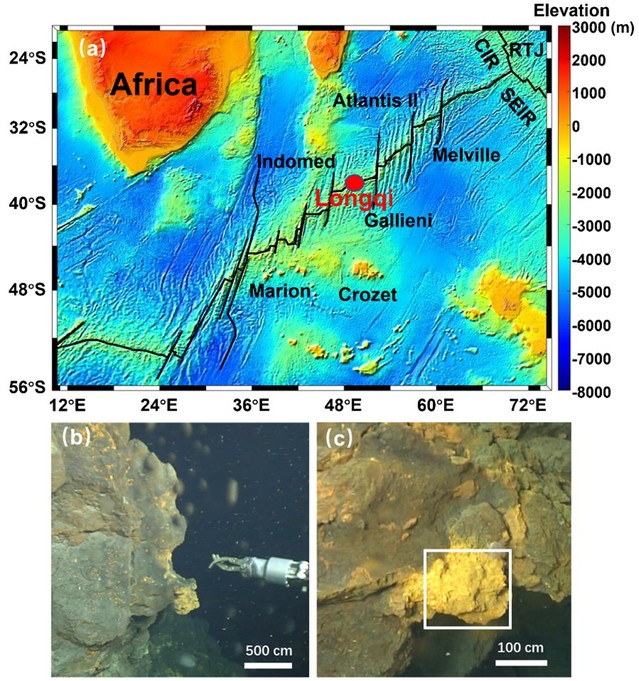Z. Zhou1, J.Li1*, L. Notini2, Z.He1, M. Schad3, K.O. Konhauser3, S. Yang1
1. State Key Laboratory of Marine Geology, Tongji University, Shanghai, China
2. Department of Civil, Construction, and Environmental Engineering, University of Delaware, Newark, DE, USA
3. Department of Earth and Atmospheric Sciences, University of Alberta, Edmonton, AB, Canada
* Corresponding author (email: jtli@tongji.edu.cn)
Abstract: Aqueous ferrous iron(Fe(II)aq) is known to induce recrystallisation of Fe(III) oxyhydroxides, yet the relevance and implications of this process in low temperature hydro thermal systems remain under explored. In this study, we investigated natural Fe-rich precipitates containing mixed phases (ferrihydrite, goethite, lepidocrocite) collected from the Long qi Hydrothermal Field on the Southwest Indian Ridge. These precipitates were then incubated with 57Fe labeled Fe(II)aq under anoxic laboratory conditions. Our results show that Fe(II)aq induced rapid mineral transformation of the Fe-rich precipitates containing the geochemical and mineralogical complexity of hydrothermal systems. Secondary lepidocrocite and goethite formed readily, and magnetite was observed under conditions with a high solid Fe(II)/Fe(III) ratio. The 57Fe(II) tracer revealed rapid Fe atom exchange between Fe(II)aq and structural Fe(III) (e.g., pre-existing goethite), leading to increased crystallinity. During the prompt and extensive Fe(II)-induced mineral transformation and recrystallisation, we also identified the development of new morphological features (e.g., lath-like structures) on mineral surfaces, alongside the redistribution of associated Co, Ni, Cu, Zn, and Ba. This suggests their enhanced mobility and potential fluxes to surrounding sea water. Together, these results provide essential, yet frequently overlooked, insights into the role of Fe(II)-Fe(III) interactions in shaping both mineralogical evolution and trace element cycling within Fe-rich hydrothermal systems.
Full Article:https://doi.org/10.7185/geochemlet.2531


